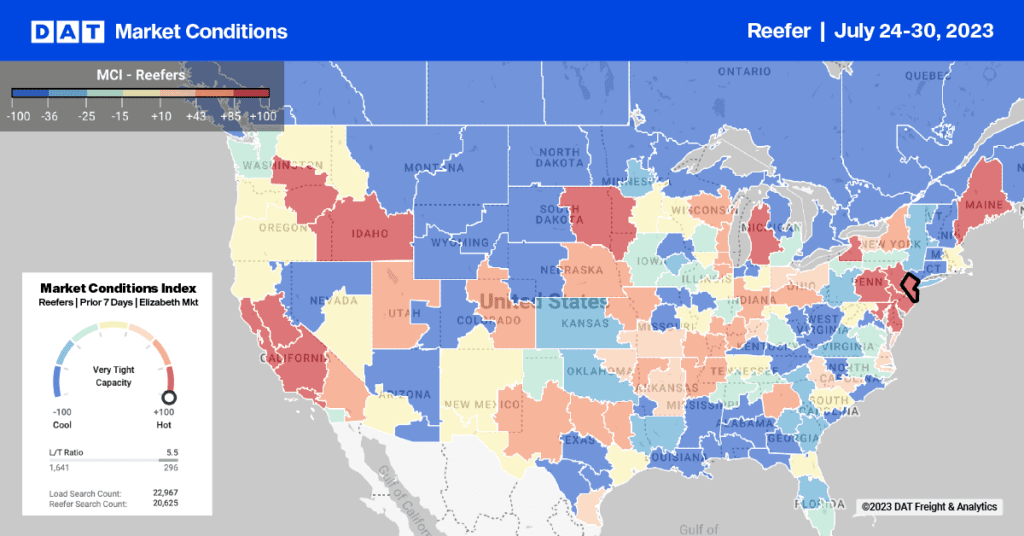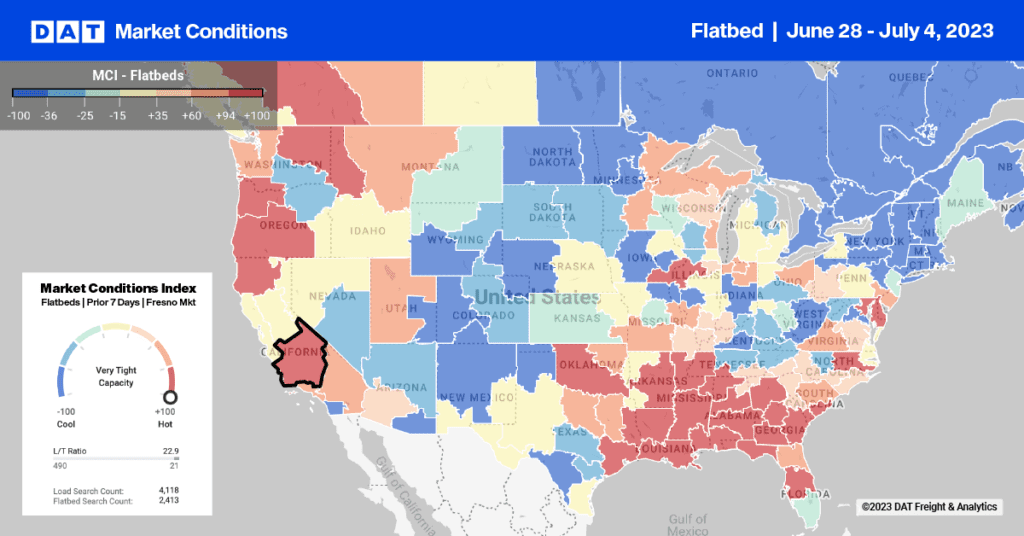Happy Thanksgiving, everybody. I hope you are celebrating with family, friends, good food and a lively football game, and may we all find reasons to be thankful in this season. Here are a few holiday-related freight trends from DAT Truckload Rate Index and the DAT Load Boards, to add to the festive mood:
REEFER – THANKSGIVING TURKEYS AND POST-SANDY RE-STOCKING PUT PRESSURE ON REEFER RATES
Reefer rates rose last week in 39 of the top 64 high-volume lanes, for an average increase of $0.05 per mile — which is a lot in one week. We expect rates to drop next week, however. Two factors influenced the temporary spike: First, hundreds of thousands of people and businesses were left without power for days or even weeks after Hurricane Sandy. That means they either ate or threw away everything in their refrigerators and pantries, and stores sold or disposed of remaining stock. Re-stocking the store shelves with perishable goods right before Thanksgiving led to a mad scramble for reefer capacity headed to the East Coast, just as some agricultural markets in Central California, Colorado and the Southeast were trying to move late season produce to market. Anything that hasn’t moved by now will have to wait until after the holiday, when urgency is lower and so are rates.

Turkeys travel by truck from Arkansas to the processing plant, warehouse, supermarket, and ultimately, to your Thanksgiving table. (Photo credit: B. K. Williams)

Demand for reefers is unusually high for the season, and trucks are scarce due to post-hurricane, pre-Thanksgiving and late harvest freight movements. The map shows load-to-truck ratios, where the darkest blue represents the markets with the highest demand-vs-capacity ratio on the DAT Load Boards on November 20.
VAN – CHRISTMAS TREE TRANSPORT DRIVES RATES UP IN PACIFIC NORTHWEST AND CENTRAL CALIFORNIA
The top lane last week in DAT Truckload Rate Index was from Portland to Stockton. Southound rates on that I-5 route increased by a full $0.58, to $2.57 per mile, and the return trip rose $0.20 to $2.64. You can probably guess why these attractive rates are likely to be short-lived: Christmas trees are on the move, and the season is brief. Millions of Christmas trees are grown in Oregon, the top producer of the live trees preferred by two-thirds of American Christmas tree buyers. The other seven biggest tree farming states are: North Carolina, Michigan, Pennsylvania, Wisconsin, Washington, New York and Virginia. Most artificial trees are imported; the largest producer is China.
Live trees should be on sale beginning this weekend, adding a splash of green and a tantalizing piney aroma to parking lots across America. For details, consult your local Boy Scout troop, PTA or Kiwanis Club. Meanwhile, here are some Interesting facts about Christmas trees, for your pre-holiday enjoyment.

Christmas trees arrive at the local lot for the Kiwanis Club’s annual tree sale. (Photo credit: Carole)

High load availability for vans on the DAT Load Boards in Oregon, Wisconsin, Virginia and North Carolina is likely associated with Christmas tree shipments, at least in part. This Hot Market Map depicts load-to-truck ratios for major freight markets on November 20.


